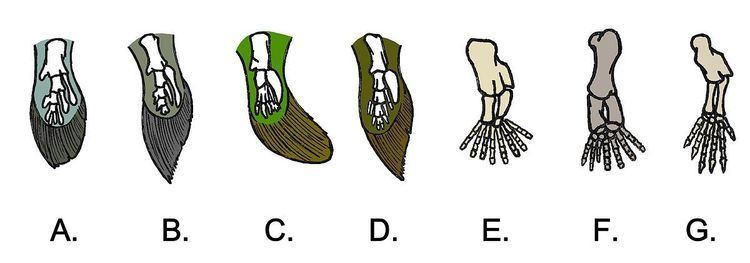 | ||
Polydactyly in early tetrapods should here be understood as having more than five digits to the finger or foot, a condition that was the natural state of affairs in the very first tetrapods. The polydactyly in these largely aquatic animals is not to be confused with polydactyly in the medical sense, i.e. it was not an anomaly in the sense it was not a congenital condition of having more than the typical number of digits for a given taxon. Rather, it appears to be a result of the early evolution from a limb with a fin rather than digits.
Tetrapods evolved from animals with fins such as found in lobe-finned fishes. From this condition a new pattern of limb formation evolved, where the development axis of the limb rotated to sprout secondary axes along the lower margin, giving rise to a variable number of very stout skeletal supports for a paddle-like foot. The condition is thought to have arisen from the loss of the fin ray-forming proteins actinodin 1 and actinodin 2 or modification of the expression of HOXD13.
Early groups like Acanthostega had eight digits, while the more derived Ichthyostega had seven digits, the yet-more derived Tulerpeton had six toes. Crassigyrinus from the fossil-poor Romer's gap in early Carboniferous is usually thought to have had five digits to each foot. The Anthracosaurs, which may be stem-tetrapods or reptiliomorphs, retained the five-toe pattern still found in Amniotes, while further reduction had taken place on other Labyrinthodont lines, leaving the forefoot with four toes and the hind foot with five, a pattern still found in modern amphibians. The increasing knowledge of Labyrinthodonts from Romer's gap has led to the challenging of the hypothesis that pentadactyly, as displayed by most modern tetrapods, is plesiomorphic. The number of digits was once thought to have been reduced in amphibians and reptiles independently, but more recent studies suggest that a single reduction occurred, along the tetrapod stem, in the Late Devonian or Early Carboniferous. However, even the early Ichthyostegalians like Acanthostega and Ichthyostega appear to have had the forward ossified bony toes combined in a single stout digit, making them effectively five-toed.
